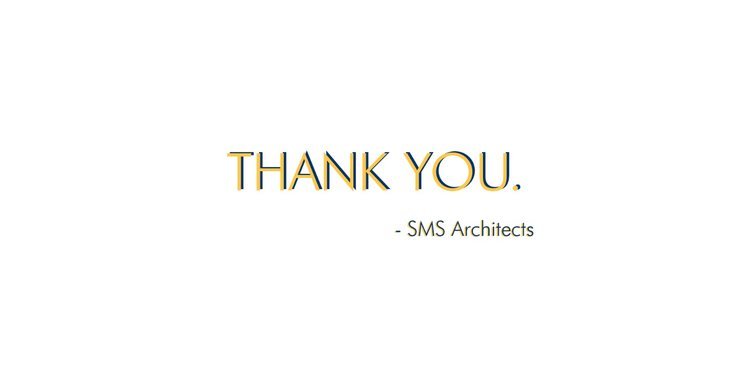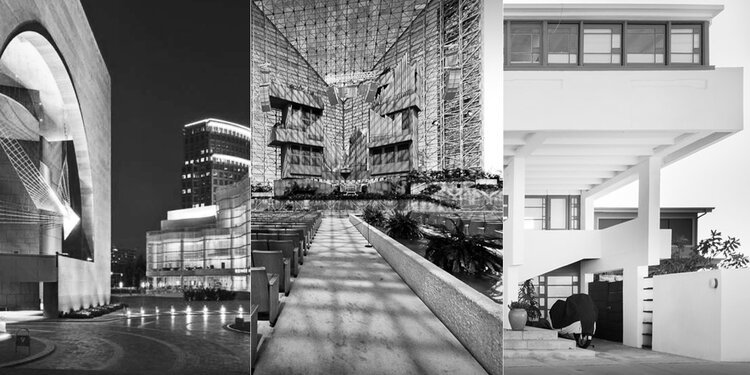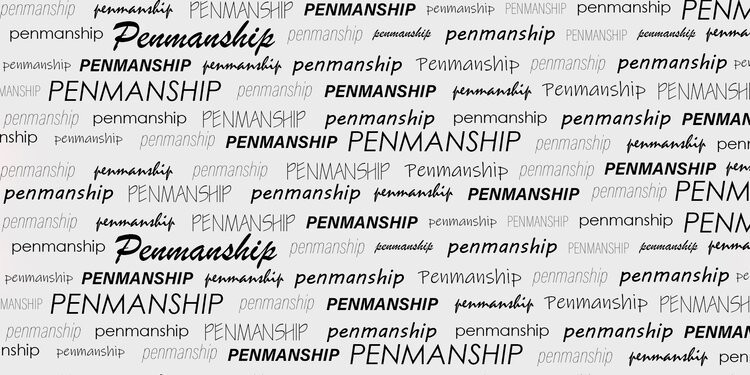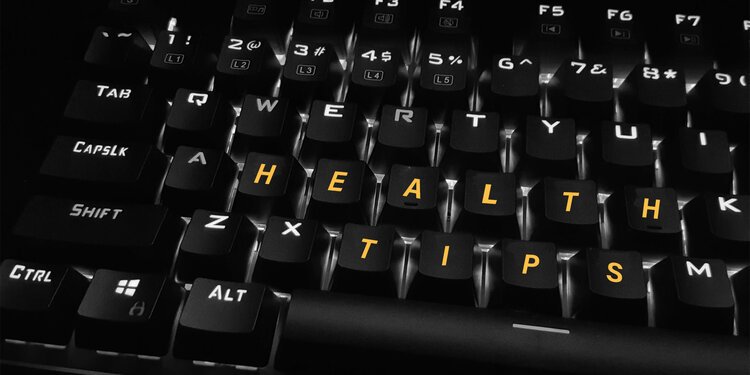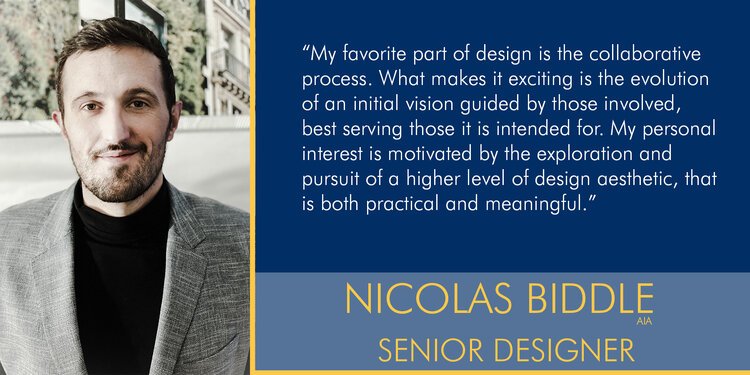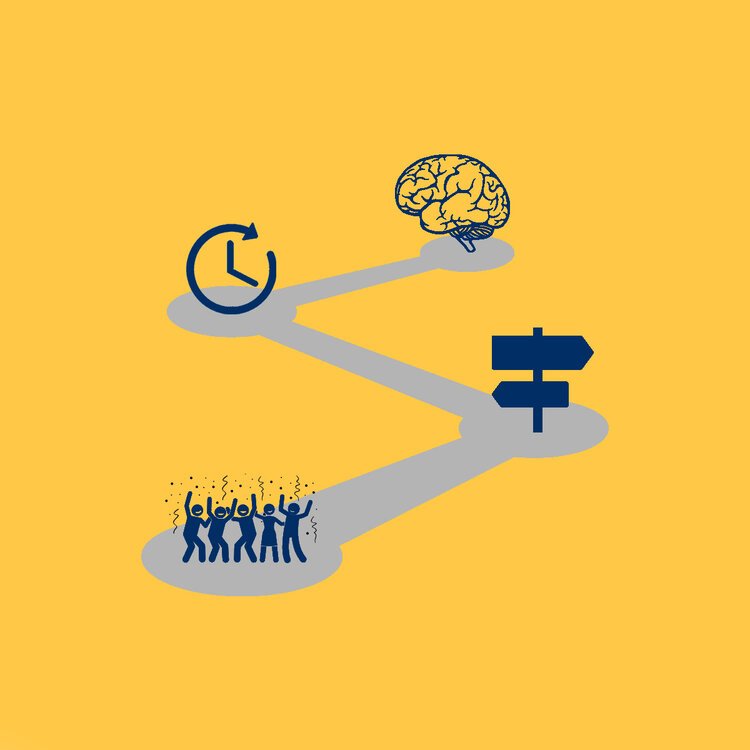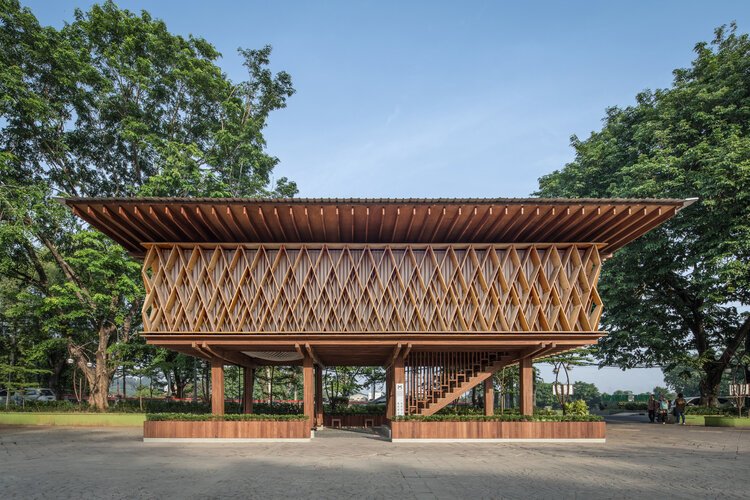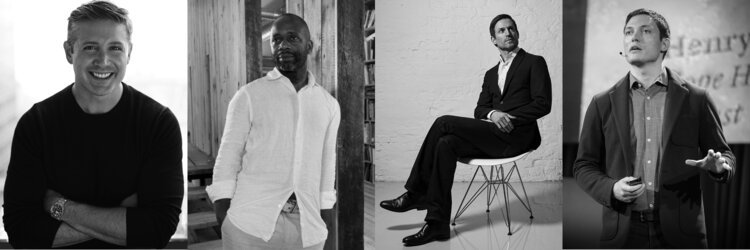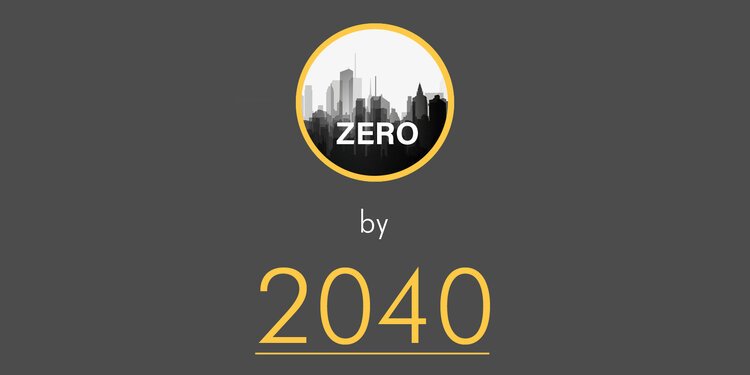Blueprint into Existence
When has been the last time you have seen blueprints? We mean actual blue-colored prints. We bet it was way back in the late 90s; who are we kidding more like the late 1940s. Wow, it's been 80 years! Now it has become a pastime aesthetic of the way things were but with the retro-modern fit of how things can continue to be visualized. (Check out our unique new Project in Palm Springs, California, in the image above). Webster's Dictionary defines blueprints as a photographic print in white on a bright blue ground or blue on white ground used especially for copying maps, mechanical drawings, and architectural plans.
Although we don't use "blueprints" in the original sense, we refer to a blueprint as any detailed plan today. But what still baffles us all is where did the blueprint come from? In 1842, an English scientist, astronomer, and photographer, John Herschel, developed blueprints. He first discovered the "Cyanotype Process." Cyanotype is a photographic process when you take a drawn image on semi-transparent paper weighed down on a piece of paper; the paper needs to be coated using two chemicals: Ferric Ammonium Citrate and Potassium Ferricyanide. The cyanotype process is complete when the drawings are exposed to light, then the background becomes blue, and the lines become white. In the 20th century, cyanotype was used as an alternative process to produce copies of drawings. No need for continued hand-tracing of original drawings.
Throughout its evolution, blueprints transitioned to Diazo Prints or White Prints (blue lines on white paper) in the 1940s. Today, original drawings are digital files produced through computer-aided design (CAD) and printed on a plotter using toner and bond paper, or better yet, just PDF'd and emailed out to the rest of the team. With the advancement in modern technology in construction and architecture, blueprints continue to evolve digitally. We wonder if we will leap forward entirely to Virtual Reality (VR) and officially leave blueprints behind. Time will tell how the architectural design process will evolve; we shall continue to enjoy modern blueprints for now.
Thank You!
It's time to give thanks to our design community. Sometimes, who are we kidding? We tend to forget to show appreciation and thanks to people or products who have made our jobs easier and meaningful. So this week,we are extending our gratitude to every single one of you that we have had the opportunity to interact within one way or another.
This year has been challenging to say the least, but it has proven to be a year of growth, learning, critiques, experimentation, and laughs. Our office is thankful for different things, and we thought it would be a great idea to share what SMS is grateful for. Today, we are happy to share the top ten things we appreciate the most.
1 | Great Clients
2 | Creative Freedom and Expression
3 | Old Wisdom
4 | Basic Essentials: Food and Shelter
5 | The ability to work alongside diverse teammates who share the same values and passions.
6 | Being around our coworkers after isolating for a year and a half.
7 | Current & New Programs: Revit, AutoCAD, Adobe Suite, Enscape, BlueBeam, BIM360, etc.
8 | Creating a sustainable, prosperous, and quickly growing design firm.
9 | The ability to Work From Home
10 | You!
The list goes on, but we believe these are staples within our design team. Once again, Thank You for being a part of our SMS journey. We appreciate every interaction we have had with each of you, and we look forward to many more!
Charging the Future: EV-Capability
Over the past ten years, hundreds of individuals throughout the world have been fighting for climate change. This past week the U.S. Senate passed a $1 Trillion Infrastructure Bill that has become one big step towards fighting climate change. With this bill we will administer money into expanding broad access and bring funding to other parts of the tech sector, as well as electric vehicles, which will be a primary focus for the design industry. So why is this important? This bill has set aside $7.5 billion in funds to install electric vehicle charging stations across the country beginning in mid-2022. And one of the main places these will be installed in are future nonresidential projects.
In the US, especially California, transportation is the most significant contributor to climate-warming emissions, mainly from everyday cars and trucks on the road. Within the past six years, the California Green Building Standards Code (CALGreen) began requiring all new construction to have access to Level 2 electric-car charging stations. In other words, they were preparing the groundwork for the gradual rollout of this widespread charging infrastructure of 2030. Currently, CALGreen requires six percent of parking spaces in new nonresidential buildings to be EV-capable, which means having a parking space be Level 2 with a conduit and electric panel capacity for a 40-ampere 208/240-volt circuit. By mid-2022, the California Air Resources Board (CARB) and CALGreen will require all nonresidential existing and new building projects to undergo significant renovations to add EV charging stations. The mandate will not affect current existing buildings under construction.
So here’s the thing, it’s time to begin thinking of how this will affect your future designs. Currently, many City governments are mandating 25 – 30% of new parking garages or surface lots to have EV charging capable stalls ready. Per CALGreen Building Code from 2020, Multifamily Dwellings currently have a three-tier system:
TIER 1 (required) requires 10% of Total Parking Spaces to be “EV Capable”
TIER 2 (optional) requires 15% of Total Parking Spaces to be “EV Capable”
TIER 3 (optional) requires 20% of Total Parking Spaces to be “EV Capable”
Regarding Guest Parking, at least one “EV Capable” space is required. Nonresidential projects are as shown below:
It’s time to charge into the future and begin making the changes regarding the tech sector and design. Don’t stall behind the rest and begin fighting for climate change by also adding EV-capable parking stalls into your projects.
References:
Director, Matt Casale. “Charged up for an Electric Vehicle Future.” U.S. PIRG, 5 Nov. 2021, https://uspirg.org/blogs/blog/usp/charged-electric-vehicle-future
Edelstein, Stephen. “Ca to Require New Buildings to Be Prepped for Electric-Car Charging Stations.” Green Car Reports, 23 Oct. 2014, https://www.greencarreports.com/news/1095076_ca-to-require-new-buildings-to-be-wired-for-electric-car-charging-stations
Krause, David. “CARB Recommends EV Charging Station Installations at Existing Buildings.” NewsData, LLC, 24 Jan. 2020, https://www.newsdata.com/california_energy_markets/regulation_status/carb-recommends-ev-charging-station-installations-at-existing-buildings/article_7bf43506-3ede-11ea-9eb1-cb816c463ca5.html
lauren_feiner. “How the $1 Trillion Infrastructure Bill Will Direct Billions toward Tech Spending.” CNBC, CNBC, 11 Aug. 2021, https://www.cnbc.com/2021/08/10/how-the-1-trillion-infrastructure-bill-will-direct-billions-toward-tech-spending.html
Ray. California Green Building Code Mandatory Measures, Blogger, 1 June 2021, https://greenbuildingalliances.blogspot.com/2018/01/california-green-building-code.html
Neuroscience Within Architecture
Buildings are getting designed faster than they are being developed for over a decade. It’s a rugged mountain to climb to begin creating interactive spaces for its users, but it’s not impossible. The basis of architecture has always been the concept of designing a building per a client’s needs. As mentioned in Mindful Interiors by Sims Hilditch, “Our bodies and brains respond to the built environment; humans are like plants.” We need a design to help us improve our health from mental, physical, and emotional aspects. If you think about it, methods derive from our brains, which are situated in a building for more than 90% of the time. So, how do we seemingly integrate our neuro necessities into architecture? Many articles and scientific research have proven how much our built environment affects our health, stemming from mental, physical, and emotional aspects that integrate our human response to the built environment.
The aging question is: How does Neuro-Architecture improve design? Neuro-Architecture uses our cognitive influence within four simple principles to inform and not determine design through analyzing, recollection, new experiences, and sensation and perception. In doing so, the design integrates a range of solutions on form, complexity, environment, acoustic qualities, etc.
So let’s jump into these four principles:
1 | ANALYZING
Analyzing consists of discovering important system properties within your design within architecture, which we can use to integrate neuroscience. Ask yourself what you are building for; who will your occupants be? What materials are you going to use? Don’t think of cost at this time. Find two pivotal points within the site or building, such as natural light or human movement that will take place. Design a space with a specific impact. Remember, architecture can affect human behavior and profoundly impact people to make them feel happy, sad, content, etc.
2 | RECOLLECTION
For decades architects have been designing based on these principles without knowing, through trial and error. By recollection, most designs will begin to implement and promote typologies that influence a moment in architecture, from using heavy timber trusses to warm space or integrating rounded décor to soften a room and increase feelings of positivity.
3 | NEW EXPERIENCES
Many use a concept for redesigning their homes every year: “move out and move back in.” this allows you to activate brain pathways and stimulate the dopamine chemical in your brain that motivates exploration. How does this relate to architecture? Simple, consider the path of foot traffic in your design and pan out spaces that can become transformative spaces, such as gardens, sensory walls, light-filled rooms, curving walls, organic materials, etc.
4 | SENSATION AND PERCEPTION
From the beginning, architecture has dominated design through sight, creating buildings that appeal to our vision. But in the past couple of years, designers have begun to integrate the rest of the human senses: sound, touch, smell, and sometimes even taste. By creating multisensory interactions through natural/artificial light to explore universal properties that expand an individual’s perspective within a space. In order to accomplish this in design, a designer has to be researching how to reduce stress from day-to-day life and integrate nature into an area that will both integrate sensation and perception for a building and its users.
Of course, these are not the only principles designers and architects should solely use to design. There are hundreds of other principles that can help derive a design. But if you take one thing from this article, let it be one outstanding question you should ask while designing: What do I want the users to feel when entering this atmosphere?
References:
CBC. (2018, October 19). Neuro-architecture: How to design a space that will help you stay sharp and stimulated. Retrieved from https://www.cbc.ca/life/thegoods/neuro-architecture-how-to-design-a-space-that-willhelp-you-stay-sharp-and-stimulated-1.4624036
Fisher, T. (2016, October 06). How Neuroscience Can Influence Architecture. Retrieved from: https://www.architectmagazine.com/practice/how-neuroscience-can-influence-architecture_o
Ltd, T.S. (2020, February 01). Emerging Trends That Will Shape the Future of Architecture. Retrieved from: https://medium.com/studiotmd/emerging-trends-that-will-shape-the-future-of-architecture-356ba3e7f910
Salingaros, N.A. (2019, October 27). How Neuroscience Can Generate a Healthier Architecture. Retrieved from: https://patterns.architexturez.net/doc/az-cf-193130
Sims Hilditch. (2019, March 01). Mindful Interiors. Retrieved from https://www.simshilditch.com/journal/mindful-interiors
Part of the Best 5 Commercial Architects in Huntington Beach, California
We want to express our gratitude to GC Magazine for their fantastic coverage of our firm in their recent magazine article. The positive exposure you gave SMS Architects has provided the community with an excellent introduction to our goals and services regarding commercial and public space design. Our entire staff appreciates the professionalism with which your team handled the interview and coverage of one of our major projects in Orange County: Pacific City in Huntington Beach. We hope to continue transforming trends in the future to keep creating client-centric designs. We are grateful for your willingness to include SMS Architects in your publication. Thanks to everyone involved.
Click on the link below to check out their fantastic article!
https://www.generalcontractors.org/the-5-best-commercial-architects-in-huntington-beach-california/
Architecture and the Impacts on Society
Architects play a more prominent role in society than other industries believe. Have you ever stood on the sidewalk in your neighborhood and wondered why certain buildings were positioned in specific locations and how safe, well-lit, and convenient these places are to you and your surroundings? Think about it; architects must design with the intent of health, safety, and welfare in the forefront of the industry and maintain any scope of concerns that can alter how one feels within and around a space. Designing architecture takes time, money, and collaboration. It’s not meant to be a cookie-cutter experience but a more profound, richer experience that creates communities based on cultural aspects, economic and scientific evidence, and detail-oriented connections that make a poetic space for every user.
So, architecture is not just about providing shelter; as mentioned above, it manipulates, enhances, and sets the context behind what we do daily and how we feel. Design has been geared towards the region, cultural interests, socio-economic growth, or climate conditions in the past four decades. Yet, in the past couple of years, architects have begun to shift in designing for society by incorporating green sustainable architecture designs, knowledge regarding energy-efficient structures, and integrated passive techniques. We have begun to create for personal use, from the experience one encounters from the first exterior view of the space to the interior environment.
Architecture has become a symbol of how we see and perceive the world. Throughout the years, the development of our society has allowed us to provide shelters, create distinctive architecture styles within the region, enhance cultural interests, climatic conditions, and locally available materials for socio-economic growth through materials, construction techniques, design, social, economic, and cultural impacts.
Architecture will continue to impact society, but a couple of ways architects can maneuver these aspects is through:
designing energy-efficient structures to change the current climate change scenario
improving individual experience through space environment to impact mental health and well-being
decreasing the concrete jungle aesthetic and encouraging local materials and architectural elements.
References:
Aman & Saxena, S. RFT|Rethinking The Future http://www.re-thinkingthefuture.com, (19 November 2020). How Does An Architect Affect The Society. https://www.re-thinkingthefuture.com/rtf-fresh-perspectives/a1106 how-does-an-architect-affect-the-society/. Accessed 16 July 2021.
Gann, A. Study Architecture http://www.studyarchitecture.com, (14 January 2019). Why Architecture Is Important. https://studyarchitecture.com/blog/architecture-news/why-architecture-is-important/. Accessed 16 July 2021.
PHD Academy, Academy. http://www.pdhacademy.com, A. P. D. H., & Author: (2017, December 28). Architects Help Shape the Health, Safety, and Welfare of Society. PDH Academy. https://pdhacademy.com/2017/10/18/architects-help-shape-health-safety-welfare-society/. Accessed 16 July 2021.
Benefits of Sketching in Your Design Practice
Drawing. Everyone has done it. Yet, in today's age of BIM and computer-aided design, sketching has become a lost art. We get it, sketching seems outdated, especially as computers are used daily to showcase 3D designs. It always helps to contextualize, remember to take a step back before you get to that point in the design process; sketches play an important role in design and development. If you pick up any architectural or design book from any architect, you will find hundreds of hand-drawn sketches portraying every step of the design process. So why did we ever stop? Architecture and design NEED sketching. Not only does it convey ideas, demonstrate functionality, illustrate human interaction from potential issues on a project to increased creative solutions. But most of all, during a client meeting, it is so critical to be able to pick up a black felt-tip pen and demonstrate several design options in 10 minutes instead of walking to your desk opening a program and 3D modeling everything and coming up with a basis of two options…seems costly and time-consuming.
Sketching is not supposed to be just for creative artistic designers. Everyone can pick up a pen and sketch or trace what you are thinking even if it comes out as an ink stain or a very detailed sketch. There are so many benefits regarding sketching within your practice. So, let us get to the nitty-gritty about why your practice should be sketching.
1 | Visual Notetaking
Need a quick way to visually explore different concepts then sketching is the solution! This is an essential step in the design process, especially while sitting in a client meeting and jotting down every idea or concern one has and how you can come up with visual solutions in an instant. As mentioned in The Role of Sketching in the Design Process by Sean Hodge, “James over at the blog Bicycle Design has this to say about sketching, “… putting ideas quickly on paper is the only way to evaluate them to see if they are worth exploring further. Computer renderings and modern CAD and modeling packages are great but thinking on paper with a good old-fashioned pencil is always the place to start.”
2 | Increased Creativity & Enhances Holistic Health
How many times have your designers sat at their computer relying solely on digital tools to create 3D sketches to show a client and spend hours at their desk only coming up with two different options? Think of how many missed opportunities they encountered from not sketching. Christian Tyler and Lora Likova from The National Center of Biotechnology Information has stated, “Visual art learning is reliant on a complex system of perceptual, higher cognitive, and motor functions, thus suggesting a shared neural substrate and strong potential for cross-cognitive transfer in learning and creativity.” Everyone on the planet is a mixture of the two brains and when drawing, these both functions intertwine and allow you to sketch what you need to portray; as well as enhancing relaxation and stress relief as a form of mediation. Below is a quick snip of the different functions each side of your brain portrays when you are sketching.
3 | Expands Communication Skills
Architecture relies on visual language. Think about it, a picture is worth a thousand words. You must remember, you as the designer, or the practice are conveying a story to a client that will represent the goal of the project. It is time to stop sitting in long meetings and just talking about a design and solutions without visual representation. Create design charettes and have every person in the meeting sketch out their ideas or what is being talked about. You will be surprised at how many solutions will be presented, even if half of them do not work you will be able to get past the brain fog and run through roadblocks faster and more efficiently.
We believe anyone can pick up a pen and draw accurately and realistically, you just must begin to do it. Think about creative ways to get everyone to sketch in your office, from simple details to wireframes, bubble diagrams, or simple site analysis. Buy a whiteboard and roll it in during meetings to quickly sketch ideas and allow everyone to give input within the design process, not only will this allow for a creative design meeting, but it will also increase productivity and design solutions. There are multiple ways your design firm can incorporate sketching; just begin with the first step and get your designers to start sketching! Trust us when we say, sketching is a game-changer.
References:
Invaluable. (2019). The Science-Backed Ways that Sketch Drawing Improves Mood. In Good Taste. Retrieved: 2021 June 28. https://www.invaluable.com/blog/sketch-drawing/
Tyler, C. W., & Likova, L. T. (2012). The role of the visual arts in the enhancing the learning process. Frontiers in human neuroscience, 6, 8. https://doi.org/10.3389/fnhum.2012.00008
Architecture in the Local Region
Orange County is known for a lot of things ranging from famous surfing spots, many Fortune 500 companies, celebrity homes, being the suburban capital of California and Disneyland. But what about its architecture? We have an abundance of beautiful architecture in our region that is frequently overlooked. So here we are with this season’s architecture highlights, so you can take your own tour this weekend of these amazing places.
1 | Segerstrom Center for the Arts
600 Town Center Dr, Costa Mesa, Ca 92626
This world-class performing arts venue was designed by Cesar Pelli – Pelli, Clark, Pelli and Assoc. and built in 1983-86 on a five-acre parcel of land in Costa Mesa, Ca. The design intent was to create a concert hall in an elegant and vibrant sculptural form that glows in Southern California.
2 | Crystal Cathedral
13280 Chapman Ave, Garden Grove, CA 92840
Redesigned in the late 1970s by Philip Johnson and John Burgee presented an ‘all glass church’ that encompassed everything Robert Schuller requested, “a building that was both a building and not a building, so that in a sense he could be in an enclosure, but it would be as if he were out of doors, which is where he began his ministry: so, this building was an entire shell of glass.”
3 | Pavilion and Rudolph Schindler Lovell Beach House
1242 W Oceanfront, Newport Beach, CA 92661
The Lovell Beach House was one of the first modern houses in Southern California located in Newport Beach, that became a perfect example of the California International Style. Designed by R.M. Schindler in 1926, his design intent was to develop a living space inside five free-standing concrete frames cast in the square figure eights representing Russian Constructivism.
Penmanship: Make It Readable!
You are sitting at your desk going through emails when you open a PDF consisting of redlines from a colleague and as the page loads you notice their writing is illegible. You start trying to decipher their writing, “what does that say (squinting at the screen) shift over tow inches commuter…emytime drop velvet points?” and you sit there for a couple of minutes trying to decipher what it says and finally cave in and ask your neighbor what they see and it’s “shift over two inches towards commercial core and drop valet spaces” …. how in the world did they decipher that!? We see this more and more in our profession now that everything is being done electronically, so why is handwriting going out the window? Why are people writing illegibly knowing they too cannot understand what they just wrote?
For many years, we have heard that bad penmanship is a sign of high – intelligence meaning that our pen cannot keep up with what our brain is telling us to write down. But, when you scribble on a sheet of paper giving redlines or comments and it looks like ‘chicken scratch’, just remember that this is telling your reader “I don’t find this as important as you do and I’m wasting my time”. Remember penmanship is a key element of communication.
It is time to embrace picking up a pen or pencil, honing down our fine motor skills and begin writing legibly. All you must do is write on a piece of paper once a day, scribble until your heart is content, learn how to re-grip and move the pen across your paper. Just doing these basic things every day will improve your penmanship! Research shows that good handwriting improves brain activity in ways that keyboarding cannot. Penmanship etiquette is easy to uphold and maintain and keeping in mind that by slowing down and shifting the angle of your pen you can make everything that much better to read and understand. So, here is to your newfound hobby of making your writing readable again!
Healthy Tips to Improve Your Overall Health
It is said that within our profession health goes out the window, and undeniably that is the truth. It’s tough to be healthy. You believe you are doing all the right things, following doctor’s instructions, trying new vitamins, controlling your diet, trying new workouts, paying an arm and a leg for a personal trainer to tell you exactly how to eat and move, but after a while it just does not seem to cut it. Our work profession knows no boundaries. Sad thing is we learned this from the long hours in studio, the excessive caffeine intake and little sleep. But if you think about it, we changed all that out for our new routines. Which sometimes means waking up and going directly to your desk chair to check emails and start the workday; you forget to have breakfast, so you have a big lunch; for your break you get up and walk to the coffee machine and sit back down at your desk and you repeat this until the end of the workday; then you just sit in front of the television or your laptop and continue your stagnate state. And then at the end of the day you look in shock at your Fitbit and wonder why you only walked about 1,000 steps all day.
And we cannot forget about our mental health. We get so immersed in our competitive nature to achieve perfect results that you notice burnout right before a huge deadline. And right away you assume it is just stress, but it’s not. So, then you begin that cycle we have mentioned above for the next week or so until you feel great, and the cycle repeats itself. Despite the roller coaster of health changes, we hope you keep these few tips in mind and consider improving your health and create maximum productivity in all aspects of your life.
1 | Eat breakfast.
Even if you are in a rush, you need the nutrients to begin your day and have lasting energy. Plus, you will complete more tasks during the day.
2 | Do not go on a diet.
Diets are ineffective and they rarely work long term. Instead, adopt a healthier lifestyle, focus on nourishing your body and eating vegetables and fruits during every meal. Do not deprive yourself. You can still have any type of meal in moderation!
3 | Move your body.
Get up and move every 45 minutes and take a lap around your office or your office building if possible. Not only will it increase your step count, but it will boost your mental health and you will be clearer headed to solve any problems. Bonus: it is proven to reduce stress even during a deadline.
4 | Open those windows.
Not only will it clear your space of indoor pollutants, it will boost your mental health and clear your mind.
5 | Add plants to your work environment to boost psychological effects of wellness.
It is a no brainer that plants eliminate air pollutants and cleans the air, but they look great in overall appearance of a space and increases creativity while creating a longevity for a happier you.
6 | Leave your desk to eat & drink some water before your meal.
It is proven that eating away from your desk and consuming water can boost your calorie burn hours after your meal.
7 | Listen to music.
Need we say more, background music helps stimulate your senses and keep you at ease during the workday.
8 | Get enough sleep.
Stop scrolling social media right before bed. Allow yourself to disconnect an hour before your bedtime, and if you can put your phone on silent or airplane mode the better, heck place it across the room, your mind will thank you later after getting some sleep.
9 | Eat nuts.
They are delicious and nutritious, plus they are loaded in magnesium, fiber, etc. all great nutrients to boost weight loss and they are perfect brain food.
10 | Do not fear coffee.
It is healthy, and there are a handful of studies that have proven its antioxidants have reduced the effects of so many illnesses.
Spring into Southern California
It has been a long year, and we are just getting to April. Living in Southern California (SoCal) has had its ups and downs between juggling work, family, and stay-at-home orders; it is finally nice to see that bright light at the end of the tunnel. People are beginning to get vaccinated and that means we are all one step closer to being out in the world again, and what better way to do so than to spring into a handful of socially distant attractions within SoCal. We live in an area where options are limitless to go out to explore. So, we have rounded up the top 5 places to go out to explore in one day or a weekend getaway. It’s time to get out there and soak up the sun!
1 | Getty Center
Image by Grading Gardens: https://www.gradinggardens.com/the-getty-center/
Time to immerse yourself in art, architecture and beautiful gardens, the Getty Center (Los Angeles) and the Getty Villa (Pacific Palisades) do just that. Admission is free and you get to explore European art up to the 1900s set within modern architecture and gardens & Greek and Roman antiquities, truly an escape from day-to-day life of the city jungle. They will re-open mid-April 2021.
2 | Crystal Cove State Park
Image by California.com: https://www.california.com/guide-crystal-cove-state-park/
If you are looking for some fun on the Pacific coastline, Crystal Cove is for you with 3.2 miles of secret coves and tide pools, hikes, horseback riding and most of all beach! This destination creates an escape for all visitors, and it is also located a mile north of Laguna Beach and a mile south of Newport Beach to continue your exploring. Parking is just $15 for the entire day.
3 | Joshua Tree National Park
Who says you cannot have fun out in the desert? This national park offers just that, a massive 790,636 acres area for outdoor recreation and fun. If you are looking for surreal landscapes and an escape of city life this location is for you. Joshua Tree is known for its camping, rock climbing, desert ecosystems, wildlife and beautiful night skies. Don’t forget to check out Cholla Cactus Garden, Skull Rock, and Cottonwood Spring Oasis. Park entrance fee is $25 per vehicle and allows for a stay of seven days.
4 | The Grove
Image by Caruso: https://caruso.com/our-portfolio/the-grove/
We did not forget about our retail shoppers! The Grove is the one stop shop for the best retail therapy. It contains a popular range of retail stores and entertainment. Shoppers love the cool features sprinkled throughout the open-air mall, the movie palace and their infamous animated music fountain. Parking is free for the first hour, there is also an offer of $10 flat rate for first 2 hours of valet parking and validation is offered from select retailers.
5 | Griffith Observatory
The best place to understand and explore the cosmos and get an incredible view of Los Angeles. The Griffith Observatory is free and worth visiting! Not only does it offer the best free public telescopes and exhibits, but there is an array of hikes to get the body moving. Parking fee is $10 for the day.
2 Weeks WFH Turns 1 Year. Happy Anniversary!
Well, Happy One Year Anniversary! A year ago, many of us believed we would be working from home for just two weeks, and it was going to be great while also working on flattening the COVID-19 curve. But in all honesty, we all were thinking “Hey, two weeks of sweatpants, no traffic, and limited interaction with the outside world. Doesn’t sound to bad right?”. Well jokes on us, because our fourteen-day quarantine became a 365 day and counting safer-at-home order. One year later and our clothing does not fit the same way it used to, thanks to all the snacking and shorter commutes to the kitchen. Social media has turned into a monotonous task of endless scrolling just to feel like you are interacting with the outside world. Sure, our daily commutes have been drastically cut down to being almost non-existent, and our savings have increased, due to the amount of money we are not spending on gas, eating out, and shopping because it is all become frightening to do so.
For the most part, this past year has taught us all a lot of things from our mental and physical health to our economic standings and ability to quarantine and flatten the COVID-19 curve. Working from home has never looked so great, from video conferencing burnout, virtual workout videos, mask making, and panic every time a county is shifted back in opening tiers. Within our SMS family, we all had to adjust and find balance between our work and home. For some that transition was difficult, but we have all managed to continue working remotely a year later. Things are going to be very different, and it is fascinating to see what people are thinking in regards of heading back into the office when the time is right. Within our office we conducted a poll to obtain employees outlook toward heading back into the office.
Our Findings:
1. Of the 100% of employees working remotely our pros consist of: 30% enjoy wearing sweats all day; 15% feel more comfortable not having people in their personal bubble; 35% enjoy the 30 second daily commute from the couch to their workspace; 20% have saved money from not buying lunch daily or pumping gas weekly.
2. Despite working from home, 33% of employees say it is harder to shut down after the workday (stating longer work hours); 28% battle with loneliness; 22% struggle with bad communication due to working remotely; 17% find it difficult to self-discipline between working and snacking.
3. Working from home has its advantages, but employees are looking forward to being back in the office and are excited about the little things: 22% are looking forward to free snacks and Boba runs; 47% can’t wait for office catchups and human interaction; 21% are excited to not wear PJs or sweats all day; and 10% are looking forward to a better workstation than the couch, floor or their kitchen countertop.
4. With all the excitement and precautions still in place heading back into the office is still up in the air for our employees: 45% are excited to head back to our office; 12% have become hermits and do not want to go back; and 43% are still indecisive about having to wear office clothing and interact physically with other employees through social distancing and precautions.
Even though our future is still being navigated to get us all back into the office safely, it is safe to say that employees have become one with their work from home workspace and getting back into the office will be a challenge, but it will be done.
Lin Smith Joins SMS Architects
Lin Smith has returned to SMS Architects as a Project Manager!
Lin has been part of the architectural industry for 15+ years obtaining her bachelor’s in Architecture from Syracuse University. Her previous experience in the field includes a wide range projects from single-family, multi-family, entertainment, retail, restaurant, mixed-use and hospitality which lead her back to SMS Architects.
As our new Project Manager at SMS Architects, Lin is responsible for the coordination of all project efforts, overseeing the production of design and contract drawings from inception, planning, execution and financial tracking. She is excited to work with many talented individuals both in and outside of the SMS office.
What’s next on your reading list?
Reading is knowledge, to a greater degree for individuals within the design industry. There is no reason for us not to be reading architecture books on any given day. Design has such a vast structure of theories and thoughts that you have never seen because you have not read every book out there on the given subject. The books we have showcased above range from different context of professionalism, inspirational, academic, urban theory, monographs, graphic novels anything that engages your spark to sit down and read a new book while we continue to go through this pandemic.
1. Constructing Architecture: Materials, Process, Structures
Author: Andrea Deplazes
A fully rounded information and reference handbook that explain the design process from start to finish featuring numerous solutions through the design process, and a major emphasis on basic technical construction knowledge.
2. Detail in Contemporary Residential Architecture
Author: Virginia McLeod
This book provides a vast variety of examples from the top 100 best residential homes to help architects consider and design details pertaining to floors, walls, ceilings, doors, windows, and staircases cross referencing between details to explain construction techniques further.
3. Ciudad Fritanga
Author: Ricardo Greene
This graphic compilation introduces us into the investigative chronicles, photos and essays about the middle-scale cities in Chile, giving us an insight into their city layout, food, daily habits, and the expectations and frustrations from citizens.
4. Less and More: The Design Ethos of Dieter Rams
Author: Klaus Klemp
Rams is one of the most influential designers of the 20th century due to his main principles of “less but better” visualizing his definition of product design, his understanding of design and what it can and should do and the boundless inspiration that can be applied to design.
5. Atmospheres: Architectural Environments. Surrounding Objects
Author: Peter Zumthor
Throughout this book Zumthor explores the boundaries of atmospheres created during his design process, by imagining the spaces a building will inhabit from materials, objects, light effects, proportions, etc. everything that “really matters in the process of house design”.
6. Programs and Manifestoes on 20th Century Architecture
Author: Ulrich Conrads
The compilation of these manifestoes and programs delve into the history of modern architecture, comparing themselves in chronological order about the different styles and differences within this architectural style.
7. The Language of Architecture: 26 Principles Every Architect Should Know
Author: Andrea Simitch, Val Warke
This visual reference reintroduces us to the foundations of architecture, its language, basic knowledge, functions and usage within design through historical elements and overviews of design disciplines.
8. Neufert Architects’ Data
Author: Ernst Neufert, Peter Neufert
The organization of this building through building types has become a great reference of design and planning within a project by illustrating plans, sections, site layouts, and design details.
9. How to Study Public Life
Author: Jan Gehl
Gehl’s examination since the 1960s of urban population pertaining to sustainability has sparked questions within the design community, and how we can bring forth nature of life into cities for human use by studying city life and understanding all the factors of a public space and spatial planning.
10. Oppositions Reader: Selected Essays 1973 – 1984
Author: K. Michael Hays
This journal consists of collected important essays from 26 different issues of oppositions from well-known architects delving into theories of architecture from 1973 – 1984 that to this day still pertain to architecture.
Nicolas Biddle Joins SMS Architects
Nicolas Biddle has joined the SMS team as our new Senior Designer!
Nicolas has been part of the architectural industry for 12+ years obtaining his bachelor’s and master’s in Architecture from Wentworth Institute of Technology. He has experience working on a variety of large-scale, residential, retail, and mixed-use international projects while working for Elkus Manfredi Architects and Jean-Paul Viguier Architects in Paris, France. Nicolas is a member of the AIA, a Fitwell Ambassador, and a Licensed Architect in Massachusetts.
As our new Senior Designer at SMS Architects, Nicolas is responsible for creating, developing and presenting design solutions to our clients. He will be coordinating all phases of architecture, planning and engineering, relying on his substantial and varied experience throughout all design phases. Nicolas is looking forward to his new role at SMS leading and collaborating with our designers.
Architecture Hacks to Enhance Your Career
You would think that after years of architecture school, years of studying for the ARE exams, and logging in thousands of hours of experience you would have created a list of architecture hacks for yourself. But, you have not. We are hit with such a reality of tough criticism, trying to overachieve, and logging in intense studio hours to obtain the distinction of that piece of paper that says you are one step closer to becoming a licensed architect. Yet, once you start working in the field, you quickly start to realize that all the criticism, the long hours in studio, all those perfect grades and GPA’s go out the window. We hold ourselves at such a high standard within the profession, that we do not realize we are like everyone else. It is time to acknowledge that predominant lessons you have learned were not only from the classroom, the study material from the exams or even architecture school (we are not disclaiming these they are a huge part of our careers…to an extant) but we have come to realize that all those things you have learned and continue to learn are not put to full use. Everyone needs a shortcut, a handful of useful hacks for your daily routine. Here are ours.
1 | Learn Additional Skills
All those techniques you have acquired throughout the years are a significant part of how you communicate. Redefine and develop strong visual, verbal and communication skills. You need to be able to explain your design with a relaxed consistent form of storytelling. You will always be communicating with your design team and your client. Captivate your audience and transition them through every step of the process. Learn new programs that will enhance your design or speed up your rendering process. Take a communication class, ask your coworkers of any personal hacks they use to help them become an extrovert when it comes to architecture, master CAD programs, even Google search. Just please keep learning!
2 | Don’t Be a Sore Loser
Stop being competitive with your coworkers when it comes to design. Be subjective, everyone has a different design style, you tend to value what you like and bash or ignore other’s ideas. Stop it! Start focusing on how compatible your design styles might be and how you can create new design standards and measures within your office for success. Present your ideas and be open to criticism and growth. Offices are always stuck in a concurrent design style “because that’s how things have always been done”, it is time to break that boundary and allow those around you to pitch in their design styles and ideas for a project. If you think about it, architecture is exciting because everyone gets to contribute!
3 | Keep Tabs of What Is on Your Person
Be aware of what you have on you or in your pocket or bag that can become handy to measure anything in the field. Some cool measuring hacks: jot down your hand, pinkie finger, your foot length, body height, and your stride on an index card from full length to different scale measurements to quickly study a space without a measuring tape. A piece of paper at 8 ½” x 11” is 34’-0” by 44’-0” at ¼” = 1’-0”, a dollar bill is 6” by 2 ½” and can be 49’-0” by 21’-0” at 1/8” = 1’-0”.
4 | Project Management Is Important, Learn it
You always believe you have unlimited time to work on a design for a project or create a set of drawings for a submittal, and within hours or days you realize you are way out of your league and you may need some help from others to get the job done. You must be a better manager of your time (it is not just your supervisor, principal or project manager’s job it is yours too) especially since every project persists of a compact budget. Create a to-do list with all the important complex tasks that need to get done in relation to time of completion. If you know you will not have time to get through everything, do not fret and ask for help. There is a reason one major factor about architecture is project management, because designers tend to believe they have all the time in the world to get something perfect and forget the most vital rule: time is money!
5 | Outcomes Change
Stop anticipating design aspects from first conception to become your final result. Nothing is perfect, and the process changes every day, allow yourself to be open to criticism from coworkers, the client, do your research, understand the equipment that will be used, do not forget about value engineering money does navigate a design, and create flexibility because projects will throw curve balls where certain design elements will need to be nixed in later stages.
We hope these simple hacks will continue to help you flourish within the profession and become helpful. Everyone starts somewhere and we do not all learn these things right away. There are many other hacks you may know that others do not, don’t be shy to share your hacks to help all of us continue learning.
Noteworthy Buildings Worldwide
Traveling has not been the same this entire year, and the chances to explore cities or countries has been harder than ever. Not only have we not been able to explore our own cities, but we also have not been able to study architectural projects that have cast the awe and magnetism of its design by traveling to their destinations and exploring at your own free will. We hope that during this new lockdown, you can take the time and explore these noteworthy buildings to get you over the hump of not being able to travel, and tack them on to your bucket list of the next places to travel to once things start to normalize.
Microlibrary Warak Kayu by Shau
Image by KIE https://kiearch.com
Shau has built a library in Semarang, Indonesia as their aim to improve access to learning for those living in the country’s poorest communities by designing functional spaces using environmentally conscious design and materials. This library serves as a public reading room with a small community centre and reading spaces with functionality. Its main design elements feature a hammock-like net floor for comfortable seating, grand staircase that creates an auditorium-style seating area, a diagonal patterned brise soleil (slightly shifted diamond pattern) to naturally shade the bookshelves, and a passive shading sustainable feature to enhance energy savings.
Opus by Zaha Hadid Architects
Image by Laurian Ghinitoiu zaha-hadid.com/architecture/opus/
Zaha Hadid Architects has just completed the new ME Dubai hotel that explores both interior and exterior features founded by Zaha Hadid. It features sculptured curved balconies, and furniture features by Zaha Hadid Design which enhances the buildings occupancy for a hotel, offices, restaurants, and apartments. This is a great example of exploring a buildings mass between solid and void aspects which enhances the dramatic geometrical fluidity of changing reflections and transparency surrounding the city.
Marine Education Center at The Gulf Coast Research Laboratory by Lake Flato
Image by Lake Flato lakeflato.com/eco-conservation/marine-education-center
After Hurricane Katrina, Lake Flato was left with questions regarding weather, architecture, and what solutions could be made for future use and the impact of future natural environment strategies. This project showcases the defense design against hurricanes and the combination of biology, ecology, and construction. Their concept as Chris Snyder has said was to adapt the mantra that, “All buildings eventually end up in the ocean.” Allowing them to use locally sourced materials to reach a simplistic architectural design.
Jiunvfeng Study on Mount Tai by gad·line+ studio
Image by ZY Studio dezeen.com/2020/05/08/jiunvfeng-study-mount-tai-china-gad-line-studio/
This study is located in Daiyue District, Tai’an City, China within the five sacred mountains. The study was to offer a visitor center with sweeping views of the mountain landscape using three design elements: a stone base, a white membrane canopy, and transparent floor and ceilings focused on an architectural philosophy of ‘less is more’. The aspect of a cloud has allowed for the design to reinterpret itself within the landscape to create a relaxed atmosphere compared to the region’s contemporary temples, creating a visible illusion of lightness and structure to create a minimal contemporary aesthetic within the cultural heritage.
These are just some of the wonderful new architectural projects out in the world today. We hope this short list has enhanced your appetite for exploration once the lockdown is over.
Top 4 Design TED Talks To Watch
Sometimes we need to seek professional inspiration from people that have done amazing things throughout the world, or simply from someone who was a great source form the TED community. Below are our top 4 design TED Talks to inspire you on this beautiful Friday; even if you have seen these already, we hope they continue to inspire you and keep those wheels turning to reinvent our design community and appeal to your architectural mindset.
WHY THE BUILDINGS OF THE FUTURE WILL BE SHAPED BY … YOU | Marc Kushner
“That feeling, those emotions that I felt, that’s the power of architecture, because architecture is not about math and it’s not about zoning, it’s about those visceral, emotional connections that we feel to the places that we occupy” says Marc Kushner. He not only talks about the past 30 years of architecture and the design process, but with a little humor interprets how architecture truly affects the atmosphere to the human being. We must begin thinking of what architecture does for us rather than what we want it to look like.
HOW TO REVIVE A NEIGHBORHOOD: WITH IMAGINATION, BEAUTY, AND ART | Theaster Gates
Imagination begins with an individual project and the relationship of synergies one wants to create. “I’ve found that in cases where neighborhoods have failed, they still often have a pulse. How do you identify the pulse in that place, the passionate people, and then how do you get folk who have been fighting, slogging for 20 years, reenergized about the place that they live?” says Theaster Gates. Culture and reinvesting in resources that have not been made available to neighborhoods ignite the start of a poetic demand as Gates explains. It is time to believe that beauty is a basic service and find a way to reinvent it within every city.
WHY GREAT ARCHITECTURE SHOULD TELL A STORY | Ole Scheeren
“Form follows function had become modernity’s ambitious manifesto and detrimental straitjacket, as it liberated architecture from the decorative, but condemned it to utilitarian rigor and restrained purpose,” says Ole Scheeren. The question that lies at hand is, can architecture and the people that work or live inside of it become a part of that building? Do their experiences communicate the design’s intent? Scheeren dives into this topic by visiting his top five buildings and the stories behind the design and the collaboration of storytelling.
ARCHITECTURE THAT’S BUILT TO HEAL | Michael Murphy
“Why was it that the best architects, the greatest architecture…all beautiful and visionary and innovative…is also so rare, and seems to serve so very few? And more to the point: with all of this creative talent, what more could we do?” Michael Murphy. There should be a holistic approach of production for a community within an environmental footprint and design. Murphy shows and explains his approach to considering different factors of healing within a footprint and how that increases the healing aspect of architecture.
Carbon Footprint: Revamp for 2040
Over the past couple of months, even years we have constantly been hearing about our carbon footprint and the 2030 goal; yet, we haven’t really seen any major changes within our communities to reach these goals, we’ve only seen the major impacts with the concurrent droughts, floods, wildfires, storms, sea level rise, extreme weather, higher temperatures, soil degradation, and the insecurity of infrastructure, health, food and water security. We have grown complacent. Since 2008 we have had this major concern and it has been avoided or minimized to be put “out of sight, out of mind.”
You’d think we’d have a plan of action, yet our current plan of action is to use all the assets we have of being able to predict disasters through technology, but we don’t put it to good use. If you’ve noticed, we put out crisis’s one at a time. We rush to all these different catastrophes take all our resources clear up the emergency and then recede and return to normal. But it’s not normal. The environment, human life, and the economy are impacted significantly after every disaster; it shouldn’t be that way. Take our COVID-19 action plan, there really wasn’t one, but you can see what an impact it has had all over the world, it’s evident we immediately took action, used all our resources, put a band-aid on it, and went back to semi-normal.
We need an action plan, this obligation of reaching a carbon footprint by 2030 does not lie on politicians and the economy. We as the building community, architecture, planning, and allied building and construction firms, organizations, and entities, must figure out this action plan and put it into motion. The design industry has used most materials and systems that have caused much of the global CO² emissions. Recently the CarbonPositive’20 Conference and Expo explained how the design industry can initiate the CarbonPositive Footprint through the understanding that designing, planning, building and manufacturing are at the mist of “reducing global CO² emissions by 50% to 65% by 2030 to reach full decarbonization by 2040.” The first steps to achieving this goal is to follow the action plan below:
· Plan and design all new buildings, developments, and major renovations to use no on-site fossil fuels (gas, heating, oil, etc.) and achieve zero carbon building operations.
· Fully electrify buildings when renovating and replacing equipment and systems to eliminate on-site fossil fuel use.
· Promote the adoption of zero-carbon building code standards as soon as possible, with adoption no later than 2025.
· Prioritize renovating and upgrading existing buildings for extended use and re-use.
· Reduce the embodied carbon of all steel and concrete in new buildings and infrastructure by a minimum of 40% by 2021, and zero embodied carbon steel and concrete by 2030.
· Reduce all other building and construction materials to be low to zero embodied carbon (minimum 40% reduction by 2021), and all materials to be zero embodied carbon (or carbon positive) by 2040.
· Promote fossil fuel free construction sites.
There are hundreds of other things we can do in our personal lives to help this motion forward, but within the design community this is the first step. If you want to learn more about the Carbon Positive Reset, check out carbon-positive.org to access this access plan, conference recordings, and more information.
Express Mindfulness and Gratitude at Work
Now more than ever, there is an importance for employees to encourage and appreciate gratitude and mindfulness in or from their workplace. After several weeks working from home, these expressions can be lost through virtual communication, but we must find a way to create this culture within the workplace. As stated in The Importance of Gratitude and Mindfulness in the Workplace, by Emma Leyton, “…66% of employees would likely leave their job if they didn’t feel appreciated. That is why creating a culture of mindfulness and gratitude, where employees are encouraged to speak up about who they are grateful for in the workplace, is key.” Many times people lose these expressions through stress geared by deadlines, meetings, phone calls, or simply just work, if you think about it we spend 2/3’s of our lives at our jobs, so we have to learn to practice gratitude for our wellbeing and productivity.
Right now, it probably feels like practicing these two expressions is simple working from home, but let me tell you something, it is not that easy. We somehow feel obligated to have our laptop chained to our hip even if we accomplish an 8-hour shift and keep responding to emails late into the night. That may not be as productive as you think it is, you must learn to step back for a little and be mindful of your life satisfaction to reduce burnout and turnover. We need to begin challenging ourselves to expand our mindfulness and gratitude before we head back into the office. So how can you get your entire office to express mindfulness and gratitude to manage stress, recognize the good throughout the day, and reinvent confidence and productivity?
5 MINUTE – FOCUS AND MAKE IT SPECIFIC
Before starting with your workday in the morning begin to make a list (physically or mentally) on what you are grateful for at work. Do this for a week, keep the list short and specific. Not only will this help you get rid of the bad habit of complaining throughout the day, but it will raise your enthusiasm and lower your stress.
STAY CONSISTENT
We get it, work gets tough and people do need recognition even if it’s a small “thank you” or “great job, glad you could help” because nothing speaks volumes like showing up and giving it your all and not receiving a mindful thank you or a special mention for a task that was overlooked or for the stressful work of completing a deadline.
STIMULATE A CULTURE OF RECOGNITION
Showing gratitude and recognition can get a little tough, so what better way to start the new tone in your work environment than having your bosses and managers set the tone. They as well as everyone else must make showing appreciation a priority and demonstrating it. It can be as easy as sending a quick message or video call through Teams or Slack to their employees and calling out the great work everyone has been doing, highlighting the achievements of an individual, or keeping the tradition of monthly office meetings, lunches, or events.
ACKNOWLEDGE WHAT EMPLOYEES REALLY WANT
Most workplaces think that just saying “thank you” is enough to show gratitude and be mindful of all employees, but that is not the only way to reward your employees and increase productivity. We will not talk about pay increases or bonuses, what I am talking about is benefits. Benefits really drive employees! You have to listen to what your employees want for themselves and their team members; it can range from health insurance, life insurance, dental/vision insurance, paid holidays, paid/sick time-off, employee activities, reimbursable expenses, 401K plans, retirement benefits, etc. You would be surprised how many employees in a lot of companies do not even get half of these benefits.
Reference:
LEYTON, E.L. (2018, April 13). THE IMPORTANCE OF GRATITUDE AND MINDFULNESS IN THE
WORKPLACE. FITBIT HEALTH SOLUTION. https://healthsolutions.fitbit.com/blog/the-importance-of-gratitude-and-mindfulness-in-the-workplace/#:~:text=Feeling%20valued%20at%20work%20is,in%20the%20workplace%2C%20is%20key


